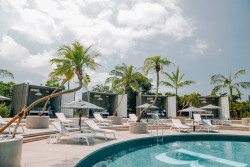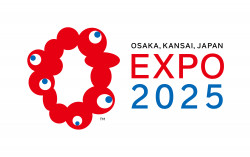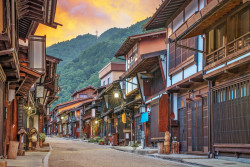
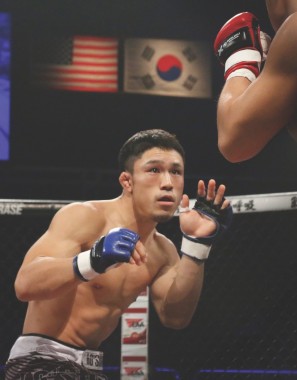
It begins with a bowed head in the changing room. A moment of quiet contemplation or a prayer to whatever gods watch over professional MMA fighters. The trainer tightly wraps tape around the fighter’s fists for protection. Well-punished cauliflower ears are a trademark in this sporting arena. The music and fanfare starts and then into the cage — a decagon, or ten-sided fighting space, where there is nowhere to hide. No ring with a rope to cling on to, or duck under, if ever in distress.
The scarlet welts appear first on the torso and head, quickly followed by a flindrikin of sweat, a defiant punch to the chest and a quick flick of the gloves to goad the opponent into coming forward for more punishment. Blood streaks across the forehead, eyebrows are slashed opened as fighters lay siege to each other while the audience roars, weeps and jeers. Using closed fists, the fighters hammer each other on the face and quickly the eyes and nose swell (as if savaged by bee stings) as they wrestle each other to the ground until the fighters resemble Francis Bacon’s seminal painting “Two Figures 1953.”

CEO of Smash Co., Ltd.
The history of MMA in Japan, to an outsider, is like a complex and intricate puzzle. Disparate organizations, groups, competitions and rules as well as promoters, fighters and fans. Pancrase, a company that promotes a particular form within MMA, itself known as Pancrase or Hybrid Wrestling, has a long history in Japan and altered dramatically at the turn of the century when MMA introduced unified rules.
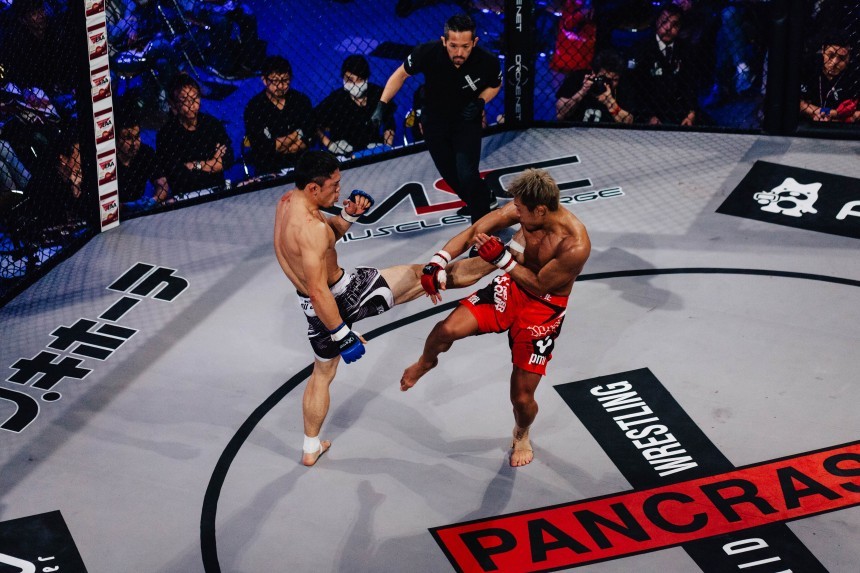
For domestic fans of Pancrase, fights can be watched on Tokyo MX and Abema TV (with Japanese commentary) or on UFC Fight Pass (English commentary). Pancrase has become the only Japanese promotion to be televised live on UFC Fight Pass and, in turn, has had a huge effect on its popularity overseas. One additional bonus for Pancrase is that it has seen the number of Pancrase fighters being scouted for UFC increase over recent years, with fighters Daichi Abe and Syuri Kondo being some of the more well-known names to cross over.
Sakai isn’t a man easily satiated and seems intent on bringing Pancrase to an even bigger global audience, with plans afoot to team up with Twitter. “Of course I’d love to have Pancrase on a major terrestrial TV channel,” says Sakai. “But the way I see it, Twitter is so big in Japan and the young people who use it are using their smartphones and tablets to watch everything. They’re not necessarily turning on the TV at home, so what I want is to have our archives and data available on Twitter. That’s the way this is going. People want to watch when they want to watch. So although it would be great to be on primetime TV, the way things are changing, it’s not really our number-one focus anymore.”
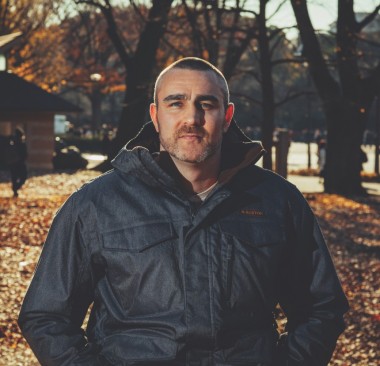
Ex-MMA fighter and face of Pancrase on UFC Fight Pass
Stewart Fulton is the face of Pancrase in the global market. He came on board as a play-by-play commentator and announcer in 2015, when Pancrase started broadcasting on UFC Fight Pass. A former professional MMA fighter himself, Fulton is expertly placed to discuss and comment on life as an MMA fighter in current times. The amiable Scot explains the rigorous training and restricted lifestyle fighters must follow if they want to be champions:
“As for training, it’s really hard. For example, the champions have to be able to fight five five-minute rounds to get the belt or defend the belt. And in order to fight 100% for 25 minutes, you have to go through some serious training. Maybe training every day. Some maybe take one day off but a lot will train twice a day, six days a week.
“They’ll train in wrestling, kickboxing, boxing and grappling/submission wrestling. They’ll run and then do strength and conditioning in the gym. They have to spar hard, but they can’t spar hard all the time. They have to work on their weak points. Your life becomes training. Usually they have high-calorie diets, but have stricter diets when trying to cut weight. It’s always a high-calorie diet which is nutritionally balanced. Heavy protein, lots of carbs. When I was fighting, I’d eat five meals a day. Three major and then two smaller.”

He adds that for many, cutting weight for the weigh-in is the most difficult part of being a fighter. Training and fighting are easier, because fighters are prepared for this part of the sport, but losing serious weight in a short period of time can be extremely taxing. “The 48 hours before the fight, they cut mostly water weight. Basically they dehydrate themselves. Then they sweat it out by hitting the spa. They take an epsom salt bath, wrap themselves in towels and repeat that so they can lose up to nine kilos in water weight. Although banned by some organizations, some fighters go on a drip afterwards to replace all the lost vitamins, minerals and electrolytes. It’s rare, but there have been deaths as a result of weight cutting.”
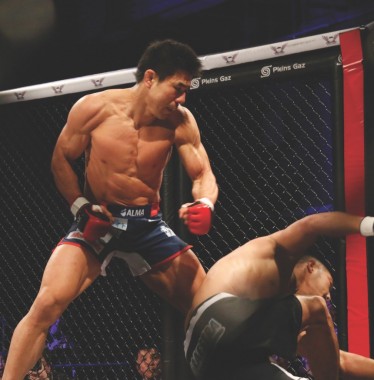
Women’s MMA is also experiencing a surge in popularity due to household names such as American fighter Ronda Rousey. In Japan, Syuri Kondo, a Queen of Pancrase holder, is just as big with a legion of fans. An astute businessman, Sakai is very invested in this side of Pancrase, and sees great opportunity in showcasing the best joshi-kaku (female fighters) in Japan.
“The joshi-kaku boom is growing. That’s why there’s more female viewers. Culturally, things have changed. Women weren’t really allowed to do these kinds of sports before, but things have changed and fitness and a strong image is more accepted and popular now. Female fighters who have a grounding in martial arts have more chances to come through the ranks and be successful. And also woman have very good communication skills, so they have a lot of appeal to the fans. That’s a big thing to see — the contrast between a fairly brutal sport and a human side. Woman have that special power or appeal. When they had UFC Japan they had two great female fights and after they fought, they were all smiles. That translates to the fans and the crowd watching.”
Sakai explains that part of the rising popularity of MMA comes down to a decision in 2005 by the athletic commision (in the US) to make MMA an official sport. This was very much influenced and supported by UFC, who campaigned seriously to have MMA considered on the same terms as baseball, basketball and American football.
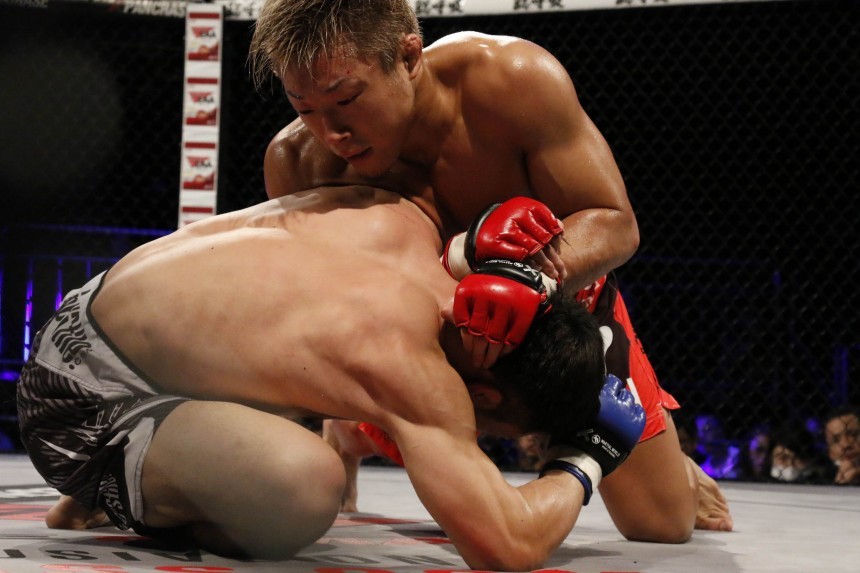
The Japanese entrepreneur has big plans for Pancrase. 2018 sees expansion into Las Vegas in August and a domestic location change from Differ in Ariake to Studio Coast on Tokyo Bay — famous for the AgeHa nightclub. Studio Coast’s multiple spaces mean more events on fight day, like barbecues, and a more festive atmosphere. The new location also has cachet within the foreign community, so Sakai expects the number of foreign visitors to increase as the sport becomes more popular. He also mentions that Japanese families often come to events, and targeting kids from a young age can only help the sport grow. Some even participate at age 15 or 16 in Neo-Blood — a competition where winners ultimately have a chance of gaining a professional license and earning a spot on the main card.
Ultimately, Sakai and Fulton are in agreement that Pancrase has the opportunity to be a global name — to be respected and recognized as “a sport for athletes,” mentioned in the same breath as other major sporting competitors.
Learn more about Pancrase here. On Sunday February 4th, Pancrase will be hosting its first fight at Studio Coast.




